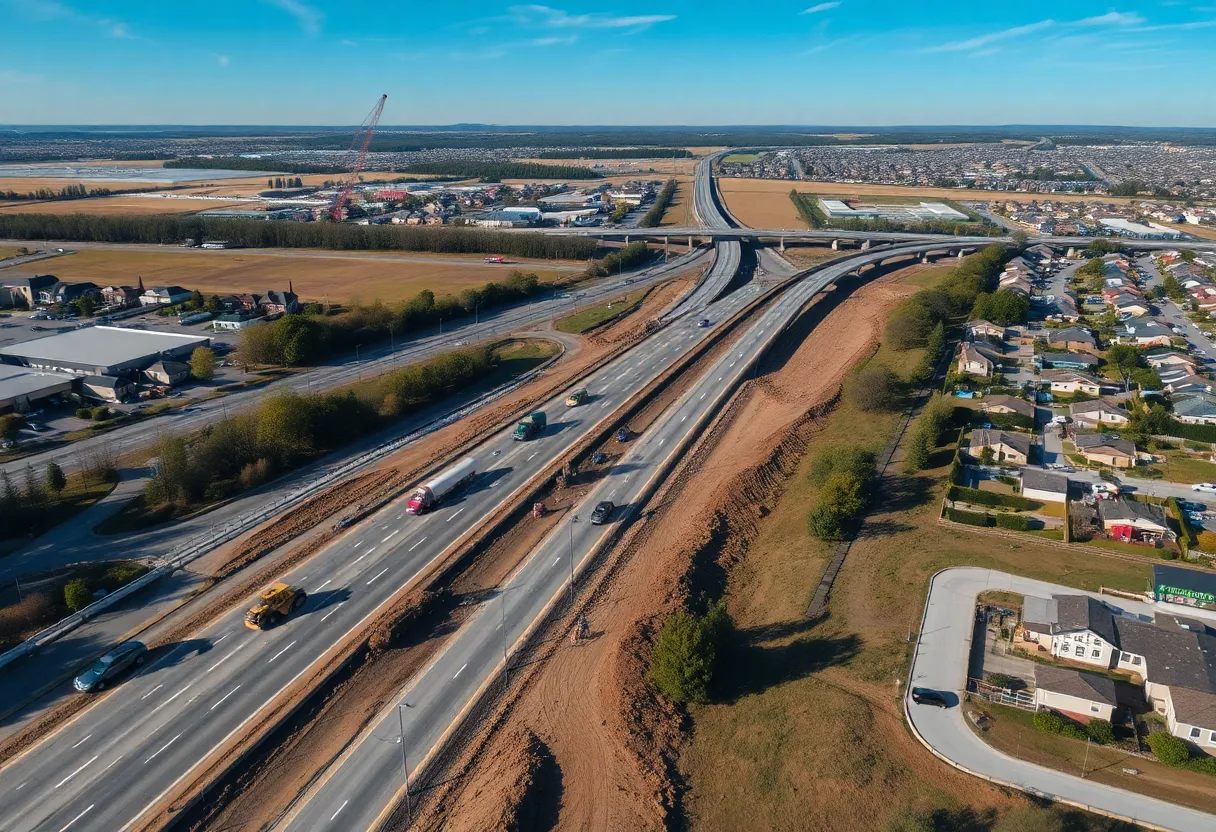News Summary
The expansion of the I-5 freeway in Norwalk has resulted in the relocation of around 290 homes and 280 businesses. Spanning a 7-mile stretch, this $2 billion project aims to improve traffic flow and relieve congestion. Concerns from community members highlight the emotional impact of such relocations, prompting discussions on the balance between infrastructure development and community well-being. As the project concludes, annual reports will track ongoing effects and enhancements across California’s freeway system.
I-5 Widening Project Relocates Hundreds in Norwalk, Reports Expansion Data
The recent expansion of the I-5 freeway has led to significant relocations, affecting nearly 290 homes and 280 businesses primarily in Norwalk. This project, intended to enhance traffic flow and relieve congestion, involves a 7-mile stretch of the freeway between the Orange County line and the 605 freeway. The expansion is part of a broader initiative that aims to improve California’s highway system.
The $2 billion construction project commenced in 2011 and reached completion in 2023. During this timeframe, a report from Caltrans noted that California added over 550 lane miles to its highway network, showcasing a 0.2% annual growth rate in lane miles between 2018 and 2023. Nearly all relocations related to the highway expansion occurred within Los Angeles County, amounting to over 620 relocations statewide. This increase in highway infrastructure largely stemmed from the need to widen Interstate 5.
A relocation is defined as the acquisition of property by Caltrans to facilitate necessary construction, often leading to demolitions for new lane additions or other facilities. The I-5 project has been particularly impactful, requiring extensive rights-of-way acquisitions to accommodate the highway widening.
Community members have voiced their concerns regarding the emotional impact of these relocations. One resident of Norwalk lamented the loss of his home, highlighting the profound toll such a project can inflict on families and individuals, particularly in communities of color. The emotional distress stemming from the loss of a home due to highway expansion underscores the need for more thoughtful urban planning.
Los Angeles County exhibited the most significant increase in lane miles compared to other regions, followed by San Bernardino and Riverside Counties. Notably, the majority of these lane additions were aimed at creating general-purpose lanes, which are not subject to the restrictions imposed on high-occupancy vehicle lanes.
In response to the ongoing challenges of transparency in highway investments, state legislation was introduced requiring Caltrans to produce annual reports, starting in 2026. This legislation mandates that the reports include vital data such as roadway additions, greenhouse gas emissions, and the miles traveled on the newly expanded corridors.
The I-5 widening project has brought noticeable improvements in commuter travel times. Data from ClearGuide, a transportation data application, indicated that the project has reduced travel duration by over eight minutes during peak hours, showcasing significant efficiency gains for daily commuters.
The initial proposals for the I-5 expansion can be traced back to 1989, encountering community pushback until funding was ultimately secured through a coalition of local cities. Such collaborations are crucial for addressing the needs of both infrastructure improvement and community preservation.
As discussions continue regarding freeway congestion relief efforts, upcoming public scoping meetings are scheduled to focus on further enhancements within the I-605 corridor in southeast Los Angeles County. These meetings aim to gather community feedback and explore additional solutions to alleviate ongoing traffic challenges.
This I-5 project exemplifies the balance that must be achieved between infrastructure development, community impact, and environmental considerations. As California moves forward with more highway expansions, the lessons learned from this project will play a crucial role in shaping future policies and community relations.
Deeper Dive: News & Info About This Topic
Construction CA Resources
Additional Resources
- LAist: I-5 Widening Project Relocates Hundreds in Norwalk
- Whittier Daily News: Widening Project on I-5 Freeway
- ABC7: Weekend Closures Planned on Southbound 605 Freeway
- Downey Patriot: Metro Seeks Feedback on I-605 Widening
- Press Telegram: I-5 Freeway Improvements in Norwalk
- Wikipedia: Interstate 5 (California)
Author: Construction CA News
The CALIFORNIA STAFF WRITER represents the experienced team at constructioncanews.com, your go-to source for actionable local news and information in California and beyond. Specializing in "news you can use," we cover essential topics like product reviews for personal and business needs, local business directories, politics, real estate trends, neighborhood insights, and state news affecting the area—with deep expertise drawn from years of dedicated reporting and strong community input, including local press releases and business updates. We deliver top reporting on high-value events such as the Rose Parade, Coachella, Comic-Con, and the California State Fair. Our coverage extends to key organizations like the California Building Industry Association and Associated General Contractors of California, plus leading businesses in technology and entertainment that power the local economy such as Apple and Alphabet. As part of the broader network, including constructionnynews.com, constructiontxnews.com, and constructionflnews.com, we provide comprehensive, credible insights into the dynamic landscape across multiple states.




